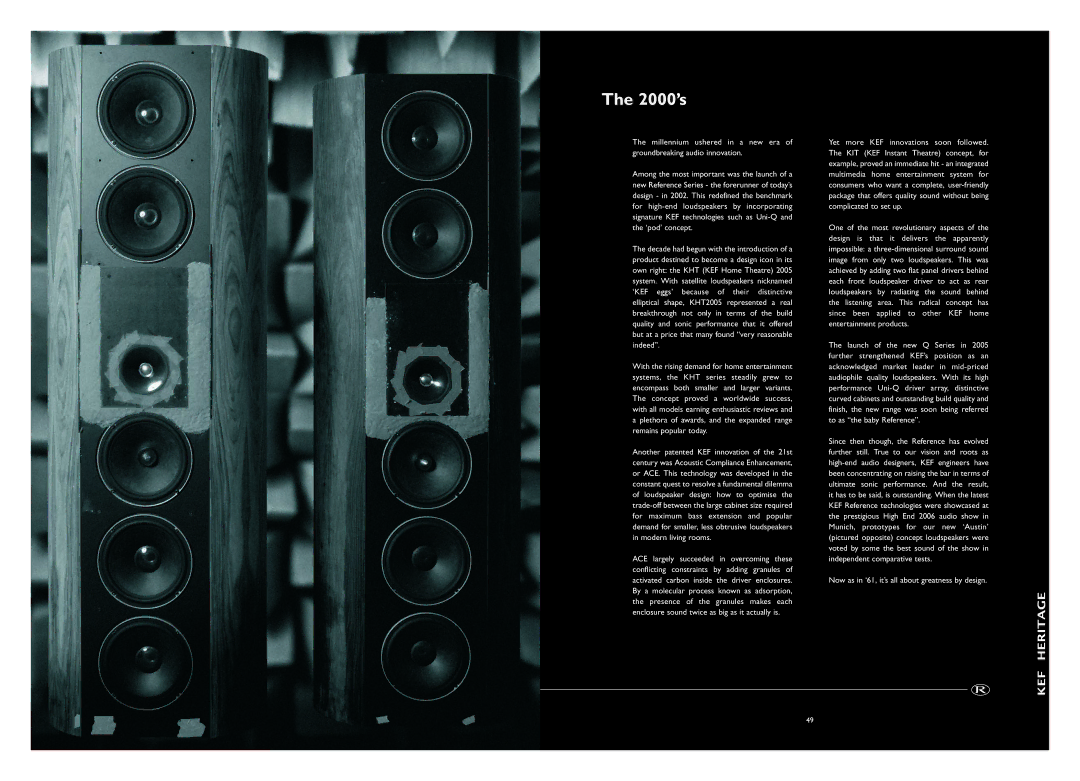
The 2000’s
The millennium ushered in a new era of groundbreaking audio innovation.
Among the most important was the launch of a new Reference Series - the forerunner of today’s design - in 2002. This redefined the benchmark for
The decade had begun with the introduction of a product destined to become a design icon in its own right: the KHT (KEF Home Theatre) 2005 system. With satellite loudspeakers nicknamed ‘KEF eggs’ because of their distinctive elliptical shape, KHT2005 represented a real breakthrough not only in terms of the build quality and sonic performance that it offered but at a price that many found “very reasonable indeed”.
With the rising demand for home entertainment systems, the KHT series steadily grew to encompass both smaller and larger variants. The concept proved a worldwide success, with all models earning enthusiastic reviews and a plethora of awards, and the expanded range remains popular today.
Another patented KEF innovation of the 21st century was Acoustic Compliance Enhancement, or ACE. This technology was developed in the constant quest to resolve a fundamental dilemma of loudspeaker design: how to optimise the
ACE largely succeeded in overcoming these conflicting constraints by adding granules of activated carbon inside the driver enclosures. By a molecular process known as adsorption, the presence of the granules makes each enclosure sound twice as big as it actually is.
Yet more KEF innovations soon followed. The KIT (KEF Instant Theatre) concept, for example, proved an immediate hit - an integrated multimedia home entertainment system for consumers who want a complete,
One of the most revolutionary aspects of the design is that it delivers the apparently impossible: a
The launch of the new Q Series in 2005 further strengthened KEF’s position as an acknowledged market leader in
Since then though, the Reference has evolved further still. True to our vision and roots as
Now as in ‘61, it’s all about greatness by design.
49
